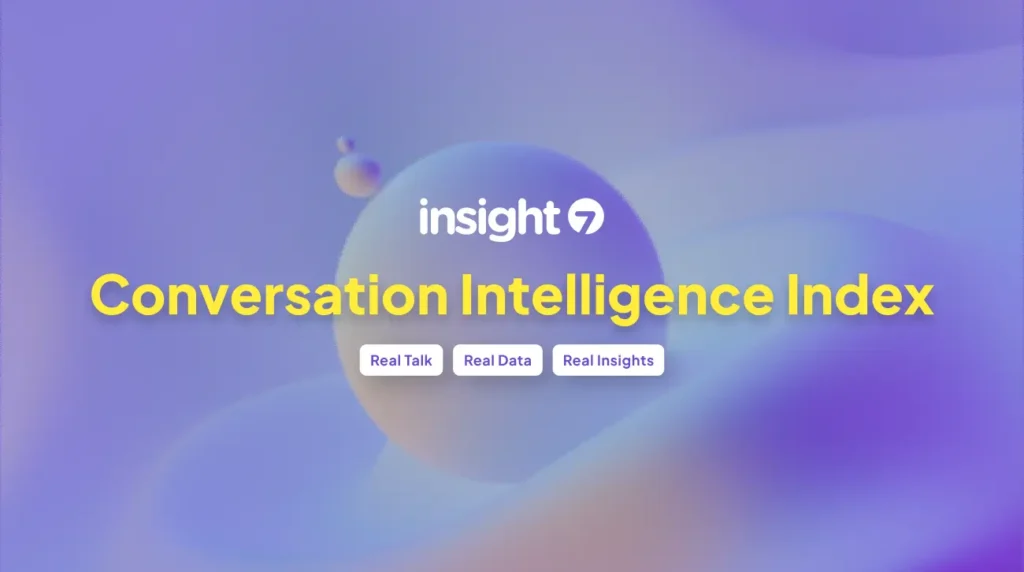best 7 policy analysis tools
-
Hello Insight
- 10 min read
Best 7 Policy Analysis Tools
Policy analysis is a critical process that helps governments, organizations, and institutions evaluate the implications of various policy options. With the increasing complexity of societal issues, the need for effective tools to analyze policies has never been more crucial. In this blog post, we will explore the best seven policy analysis tools that can help streamline the analysis process, enhance decision-making, and ultimately lead to better policy outcomes.
1. Insight7
Insight7 is a powerful interview analysis platform designed to synthesize qualitative data at scale. It is particularly useful for policy analysts who need to derive actionable insights from interviews, focus groups, and surveys. Here are some key features of Insight7:
- Automated Transcription: Insight7 can transcribe audio and video files, making it easy to convert interviews into text for analysis. The platform boasts a transcription accuracy of 97-99%, ensuring reliable data.
- Thematic Analysis: The platform allows users to extract themes and insights from transcripts quickly. Users can define their own tags and categories, making it easy to identify key issues and trends.
- Multi-Project Analysis: Insight7 enables users to analyze multiple projects simultaneously, allowing for comparative insights across different datasets.
- Journey Mapping: The tool can create visual representations of customer journeys, helping analysts understand the experiences and emotions of stakeholders throughout the policy process.
- Data Privacy Compliance: Insight7 takes data privacy seriously, ensuring compliance with regulations such as GDPR and SOC2. Users can anonymize sensitive information during the analysis process.
To get started with Insight7, you can sign up here for a free trial and see how it can transform your policy analysis workflow.
2. NVivo
NVivo is a qualitative data analysis software that allows researchers to organize, analyze, and visualize unstructured data. It is widely used in social sciences and policy research. Key features include:
- Data Organization: Users can import various data types, including text, audio, video, and images, and organize them into folders for easy access.
- Coding and Tagging: NVivo allows users to code data segments, making it easier to identify patterns and themes.
- Querying and Visualization: The software provides advanced querying capabilities and visualization tools to help users understand their data better.
3. MAXQDA
MAXQDA is another qualitative data analysis tool that supports researchers in analyzing qualitative and mixed methods data. Its features include:
💬 Questions about best 7 policy analysis tools?
Our team typically responds within minutes
- Flexible Data Import: Users can import data from various sources, including surveys, interviews, and focus groups.
- Visual Tools: MAXQDA offers a range of visualization tools, such as concept maps and word clouds, to help users present their findings effectively.
- Team Collaboration: The software supports collaborative work, allowing multiple users to work on the same project simultaneously.
4. Dedoose
Dedoose is a web-based application designed for mixed methods research. It is particularly useful for researchers who need to analyze qualitative and quantitative data together. Key features include:
- User-Friendly Interface: Dedoose offers an intuitive interface that makes it easy for users to navigate and analyze data.
- Data Visualization: The platform provides various visualization tools to help users present their findings clearly.
- Collaboration Features: Dedoose allows for real-time collaboration, making it easy for teams to work together on projects.
5. Atlas.ti
Atlas.ti is a qualitative data analysis software that helps researchers analyze complex data sets. Its features include:
- Data Management: Users can manage large volumes of data, including text, audio, and video files, in one place.
- Coding and Memoing: Atlas.ti allows users to code data segments and create memos to capture insights and reflections.
- Network Views: The software provides network views to help users visualize relationships between codes and themes.
6. Qualtrics
Qualtrics is a powerful survey tool that also offers qualitative analysis capabilities. It is widely used for market research and policy analysis. Key features include:
- Survey Creation: Users can create complex surveys with various question types, including open-ended questions for qualitative insights.
- Data Analysis: Qualtrics provides built-in analysis tools to help users interpret survey results and identify trends.
- Reporting: The platform offers customizable reporting options, making it easy to share findings with stakeholders.
7. SurveyMonkey
SurveyMonkey is a popular survey tool that allows users to create and distribute surveys easily. While it is primarily a quantitative tool, it also supports open-ended questions for qualitative insights. Key features include:
- Survey Design: Users can design surveys with various question types, including open-ended questions for qualitative feedback.
- Data Analysis: SurveyMonkey provides basic analysis tools to help users interpret survey results.
- Integration: The platform integrates with various applications, making it easy to incorporate survey data into existing workflows.
Conclusion
In conclusion, effective policy analysis requires the right tools to synthesize and analyze qualitative data. Insight7 stands out as a comprehensive solution for interview analysis, while other tools like NVivo, MAXQDA, Dedoose, Atlas.ti, Qualtrics, and SurveyMonkey offer valuable features for qualitative and quantitative research. By leveraging these tools, policy analysts can streamline their workflows, derive actionable insights, and ultimately make better-informed decisions. If you're looking to enhance your policy analysis capabilities, consider exploring these tools and see how they can support your research efforts.
💬 Questions about best 7 policy analysis tools?
Our team typically responds within minutes



